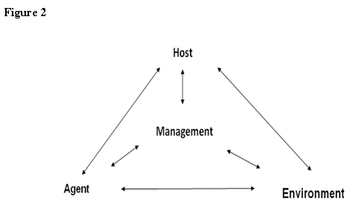Grant Dewell, DVM, MS, PhD
Articles by Grant Dewell, DVM, MS, PhD

Estrous synchronization is the manipulation of the reproductive cycle so that cows can be bred in a predefined interval. Typically, estrous synchronization has been used to facilitate artificially insemination (AI) by decreasing labor to detect estrus and to schedule breeding to specific days.

Veterinarians have been a privilege to use and prescribe FDA approved drugs in an extra label manner and to compound drugs to meet the specific health care needs of the diverse patients.

Health management can be a critical component in adding value to calves. Whether calves are sold at weaning, after pre-conditioning or backgrounding or retaining ownership through the feeding phase a health management program is important.

Trichomoniasis is a sexually transmitted reproductive disease of cattle caused by Tritrichomonas foetus (formally named Trichomonas foetus). There has been a re-emergence of the disease due to increased movement of breeding cattle across the country. The disease is characterized by infertility and early embryonic death.

There has been a lot of discussion in the past 10-15 years regarding the number of Food Supply Veterinarians (FSV) and/or Rural Veterinary Practitioners (RVP). The difference in these two populations is that FSV include government veterinarians (APHIS and FSIS), researchers, educators and other veterinarians that are somehow connected with a food animal production.

The heifer selection program is a vital aspect of a commercial cow-calf operation. Since replacement heifers represent the future potential of the herd, successful replacement programs are a high priority item requiring careful attention by the ranch manager.

On January 30, 2008 the beef industry was reminded of the importance animal care. The Humane Society of the United States (HSUS) released a video showing abuse of compromised dairy cattle at a California slaughter house.

Respiratory disease is cited as the most common health problem encountered in U.S. feedlots. Bovine Respiratory Disease (BRD) is a multi-factorial disease that affects the lower respiratory system.

Respiratory disease continues to be the major cause of disease in feedlot. On average about 15% of feedlot cattle will have respiratory disease compared with less than 2% for digestive or any other disease problem.

Epidemiology is the study of health related states within a specified population.

Epidemiology is the study of health related states within a specified population.

Veterinarians have been a privilege to use and prescribe FDA approved drugs in an extra label manner and to compound drugs to meet the specific health care needs of the diverse patients.

The concern that consumers and retailers have for food safety has shifted need for food safety programs back to farm level.

Historically cow-calf producers have been plagued by a market that is beyond their control, that is, a reasonably competitive market.

One key for profitability for cow-calf producers is pounds of calf weaned in the fall.

The heifer selection program is a vital aspect of a commercial cow-calf operation.




